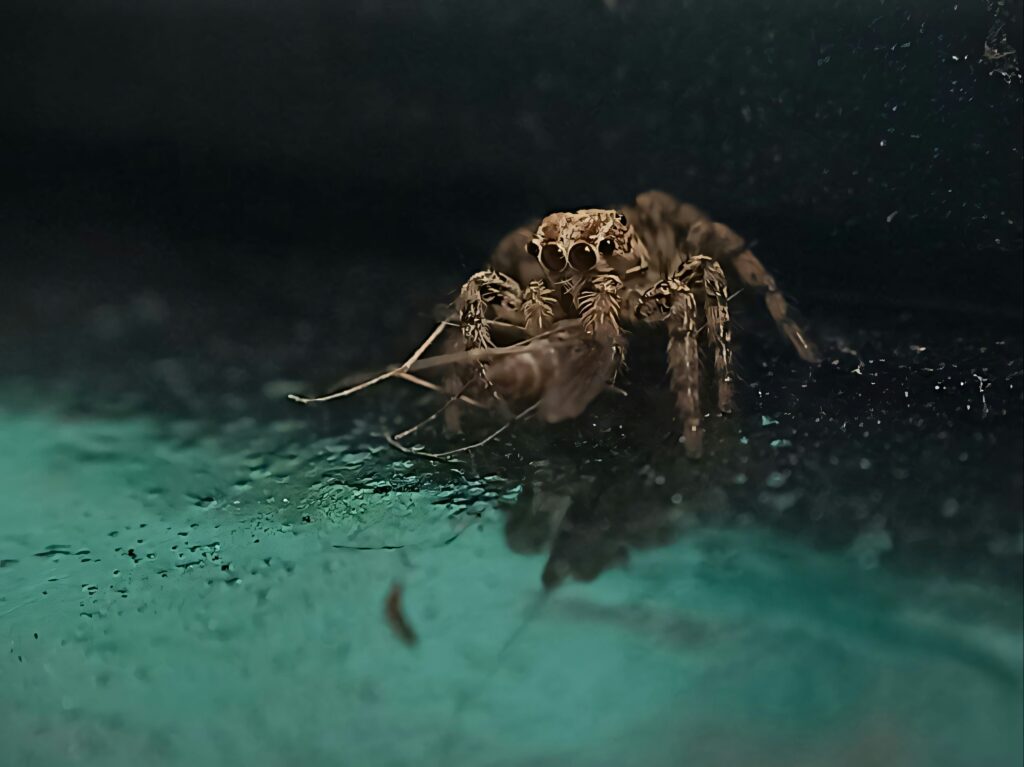The animal kingdom never ceases to amaze with its remarkable adaptations and specialized creatures. Among these evolutionary marvels is a particularly fascinating arachnid that combines two seemingly contradictory abilities: delivering venom and walking on water. The fishing spider (genus Dolomedes) stands as nature’s unique solution to hunting in aquatic environments while maintaining the predatory advantages of venomous spiders. Unlike most of its terrestrial relatives, this remarkable creature has mastered the physics of water tension while carrying a potent chemical arsenal, creating a truly specialized predator that dominates the margin between land and water.
The Remarkable Fishing Spider: An Overview

Fishing spiders (genus Dolomedes) belong to the family Pisauridae, commonly known as nursery web spiders. These impressive arachnids are distributed globally across every continent except Antarctica, with approximately 100 species identified worldwide. Unlike typical web-building spiders, fishing spiders are active hunters that have evolved specialized adaptations for life at the water’s edge. Their large bodies typically range from 1 to 3 centimeters in length, with some females reaching impressive spans of up to 7 centimeters including their leg spread. What makes them truly unique in the arachnid world is their remarkable ability to not only survive near water but to actively hunt on its surface – all while possessing venom potent enough to subdue prey significantly larger than themselves.
The Science Behind Walking on Water
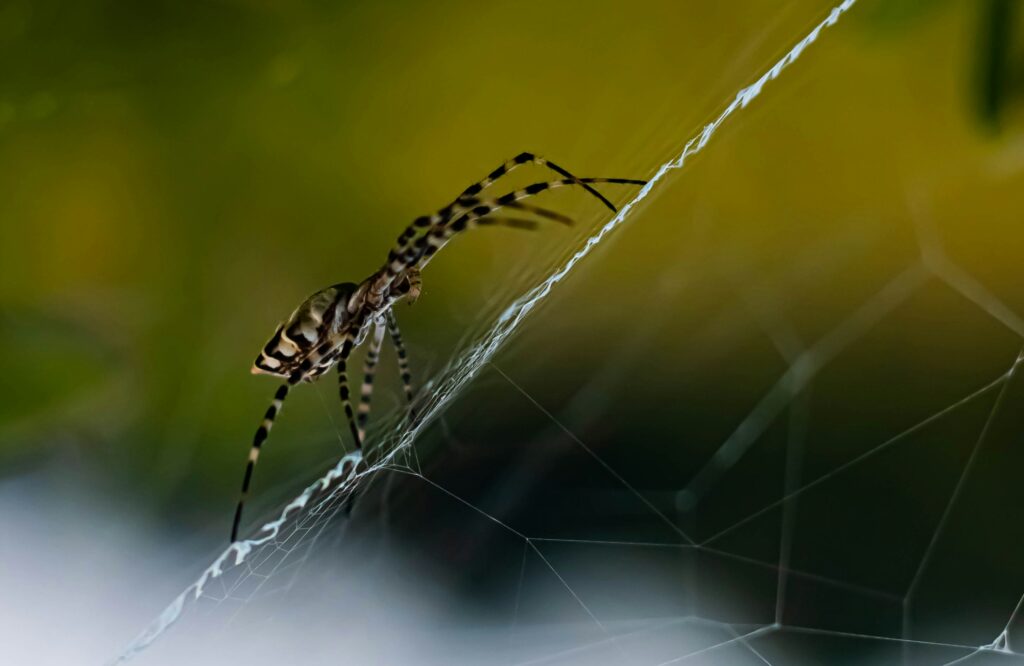
The fishing spider’s ability to walk on water relies on the physical principle of surface tension – the property that allows the surface of a liquid to resist external force. These spiders possess specialized hydrophobic (water-repellent) hairs on their legs that prevent them from breaking through the water’s surface. When a fishing spider stands on water, it distributes its weight across its eight legs, creating small dimples in the water’s surface without breaking through. This adaptation is further enhanced by the spider’s lightweight body structure and the specific positioning of its legs, which maximizes surface contact. The fishing spider can detect minute vibrations through the water’s surface, essentially using the water itself as an extension of its sensory system to locate prey – a remarkable evolutionary adaptation that combines physics and biology.
Venom Composition and Delivery
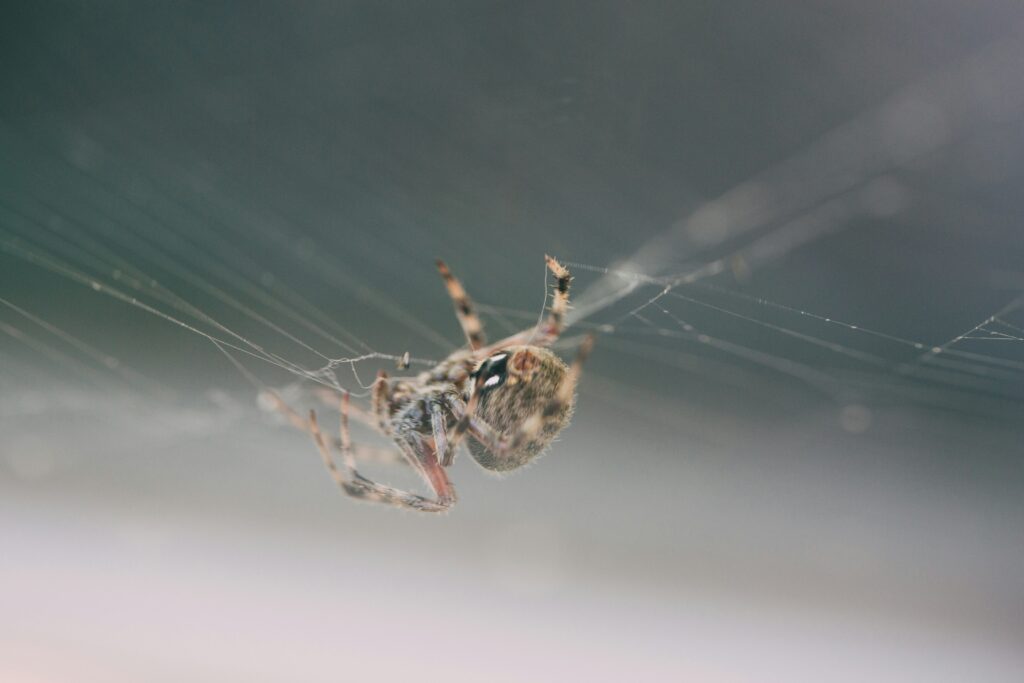
The fishing spider’s venom is a complex cocktail of neurotoxins and enzymes specifically evolved for hunting and subduing prey. Unlike more dangerous spiders like the black widow or brown recluse, fishing spider venom is primarily designed to immobilize small aquatic and semi-aquatic creatures rather than as a defense against larger predators. Their venom delivery system consists of specialized fangs that inject this toxin directly into prey. The venom works rapidly to paralyze small fish, aquatic insects, and even small amphibians, allowing the spider to feed safely. Despite their impressive hunting capabilities, fishing spider venom is generally considered mild for humans, typically causing only localized pain and swelling similar to a bee sting, though individual sensitivity can vary.
Hunting Techniques on the Water’s Surface

Fishing spiders employ a fascinating array of hunting strategies that showcase their masterful adaptation to aquatic environments. These predators often position themselves with their front legs extended onto the water’s surface, using specialized hairs to detect the subtle vibrations created by potential prey. When a victim is detected, the spider rushes across the water with remarkable speed, sometimes exceeding 1 meter per second, allowing it to capture prey before escape is possible. Some fishing spider species can even temporarily submerge themselves, diving up to 18 centimeters underwater to capture prey or escape threats. Perhaps most impressively, these spiders can differentiate between the vibrations caused by edible prey and those from falling debris or other non-edible sources, demonstrating a sophisticated sensory system fine-tuned for aquatic hunting.
Diet and Prey Selection
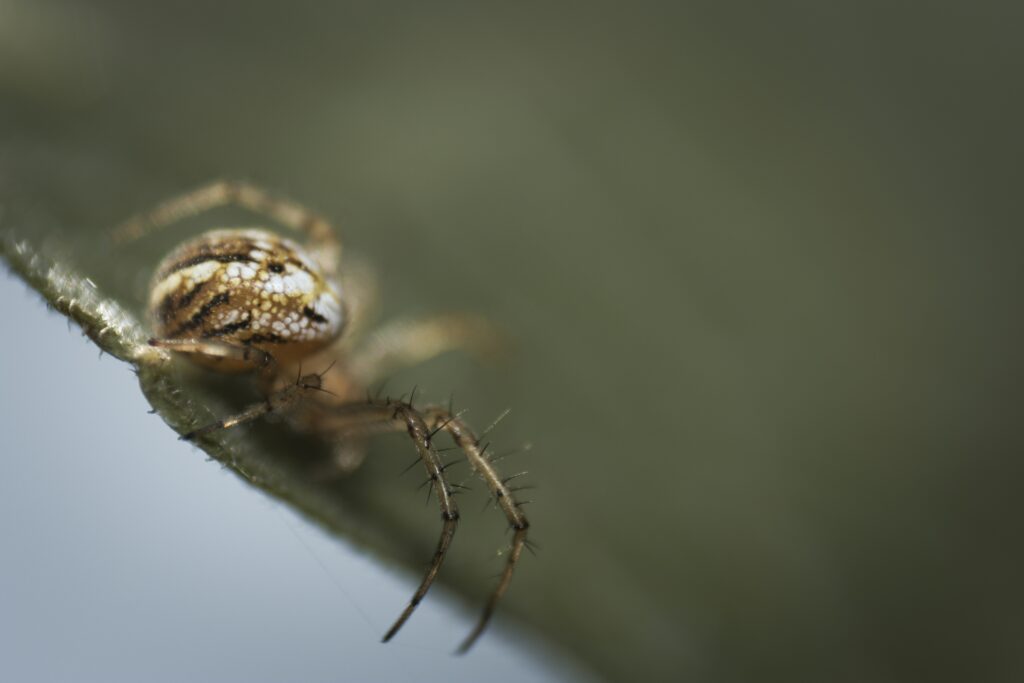
The fishing spider’s diet reflects its unique ecological niche as a semi-aquatic predator capable of crossing the boundary between water and land. Their primary prey includes small fish, tadpoles, aquatic insects, and freshwater invertebrates that they detect through vibrations on the water’s surface. Remarkably, these spiders can capture prey up to five times their own body weight, a testament to both their hunting prowess and the effectiveness of their venom. In addition to aquatic prey, fishing spiders readily consume terrestrial insects that fall onto the water’s surface or that they encounter during excursions onto land. This dietary flexibility allows fishing spiders to thrive in environments where other predators might struggle, as they can effectively hunt in multiple habitats and adapt their feeding strategies according to available prey.
Habitat and Distribution
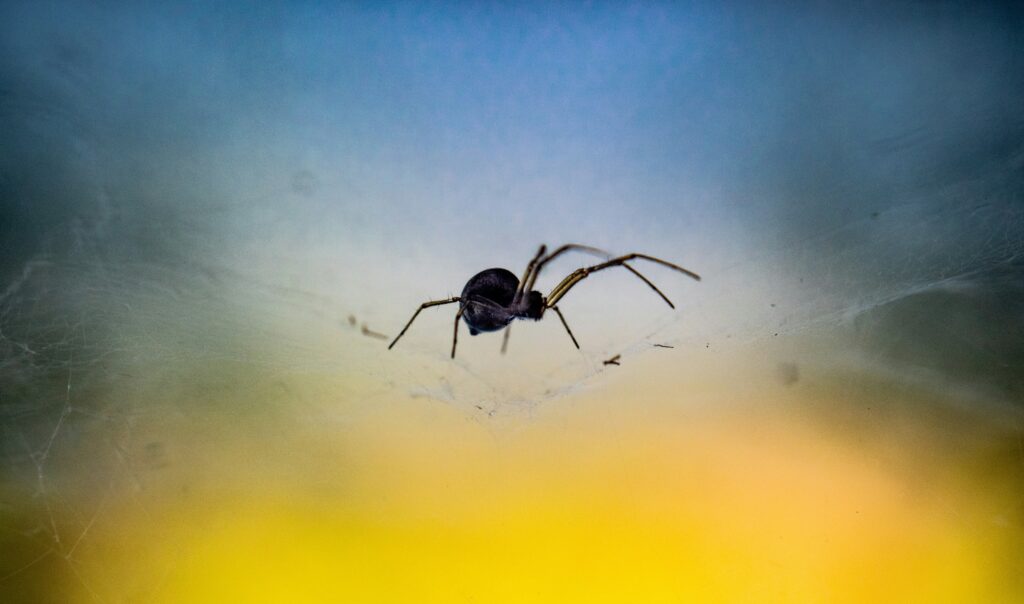
Fishing spiders have successfully colonized freshwater ecosystems across the globe, demonstrating their evolutionary success as a specialized predator. These adaptable arachnids can be found on every continent except Antarctica, particularly thriving in areas with stable freshwater sources including ponds, lakes, slow-moving streams, and marshlands. Different species within the Dolomedes genus have specialized for particular microhabitats – some prefer the edges of fast-moving streams, while others dominate in still waters or even brackish environments. In North America, the six-spotted fishing spider (Dolomedes triton) is particularly common around the edges of ponds and lakes throughout the eastern and central United States. Their preference for the liminal space between land and water has allowed them to occupy a specialized ecological niche with relatively few competitors.
Reproduction and Life Cycle

The reproductive behaviors of fishing spiders showcase fascinating adaptations specific to their semi-aquatic lifestyle. Female fishing spiders produce distinctive silk egg sacs containing hundreds of eggs, which they carry attached to their spinnerets or held in their chelicerae (mouthparts). As hatching approaches, the mother constructs a specialized “nursery web” – a silk tent where she places the egg sac and guards her offspring during their vulnerable early development. Unlike many spider species where sexual cannibalism is common, male fishing spiders typically survive mating encounters, though they remain cautious during courtship. The spiderlings emerge fully formed but miniature, already possessing the ability to walk on water and hunt small prey. Young fishing spiders disperse by a behavior known as “ballooning,” where they release strands of silk that catch air currents, allowing them to travel considerable distances to establish new territories.
Remarkable Sensory Adaptations
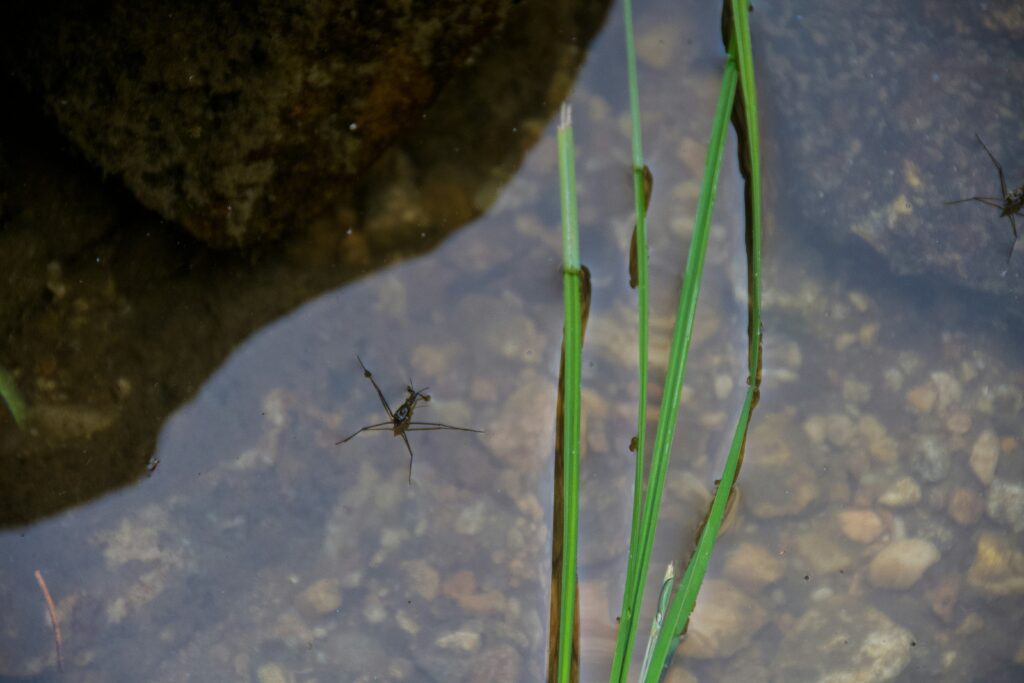
Fishing spiders possess extraordinary sensory capabilities specifically evolved for hunting in the complex interface between water and air. Their legs are equipped with thousands of specialized mechanoreceptor hairs called trichobothria that can detect minute vibrations traveling through the water’s surface, effectively functioning as an extended sensory network. These vibration-sensing organs are so sensitive they can detect movements as subtle as a struggling insect up to 60 centimeters away. Beyond vibration detection, fishing spiders possess excellent vision through their eight eyes arranged in two rows, allowing them to visually track prey both above and below the water’s surface. Some research suggests they may even detect polarized light reflections off water, an adaptation that would enhance their ability to navigate and hunt in their specialized habitat.
Defensive Mechanisms and Predators
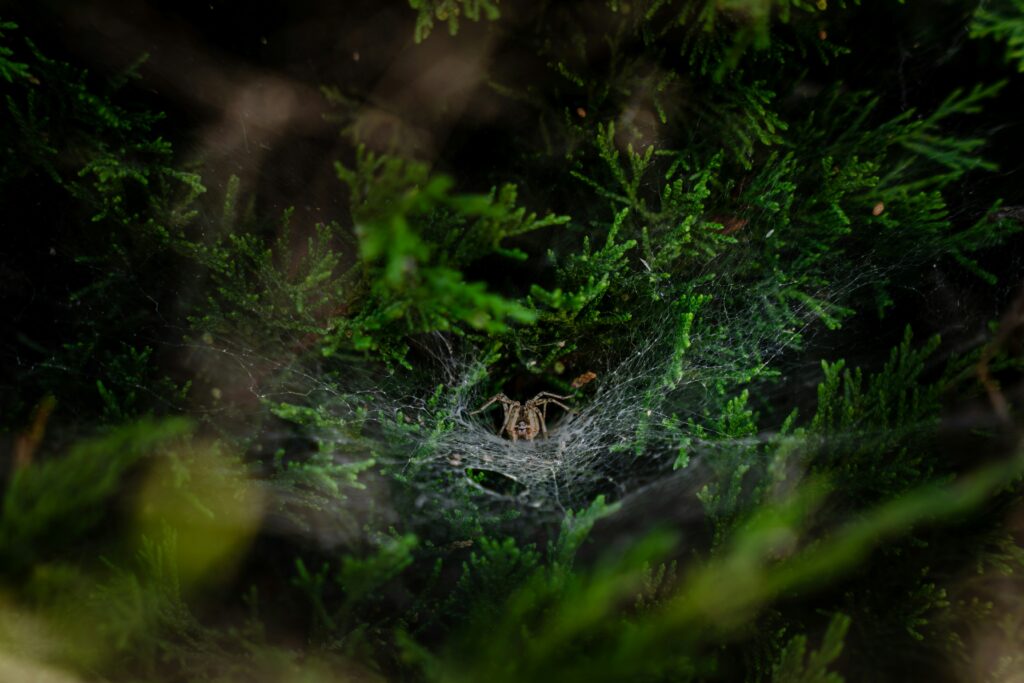
Despite being formidable predators in their own right, fishing spiders must contend with numerous threats in their aquatic and terrestrial environments. When threatened, these spiders employ several defensive strategies beyond their mild venom. Their primary defense is rapid escape across the water’s surface, where they can achieve impressive speeds of up to 1 meter per second – faster than most potential predators can respond. If pursued, fishing spiders can submerge themselves completely underwater, trapping air bubbles among their body hairs to breathe while hidden for up to 30 minutes. Natural predators of fishing spiders include birds, larger fish, frogs, and larger predatory insects like giant water bugs. Their cryptic coloration – typically mottled patterns of brown, gray, and black – provides excellent camouflage against the backgrounds of rocks, vegetation, and driftwood where they commonly rest.
Comparative Analysis: How They Differ From Other Water Spiders

While several spider species have adaptations for living near water, fishing spiders stand unique in combining true water-walking abilities with venom. Water spiders (Argyroneta aquatica), for instance, live almost entirely underwater within air bubbles but don’t hunt on the water’s surface. Wolf spiders can occasionally traverse water surfaces but lack the specialized hunting techniques and efficiency of true fishing spiders. Raft spiders (also in the Dolomedes genus) share many characteristics with fishing spiders but tend to rely more on static hunting positions rather than active pursuit across water. What truly distinguishes fishing spiders is their comprehensive suite of adaptations: water-repellent hairs, vibration-sensing organs, specialized hunting behaviors, venom composition tailored for aquatic prey, and the ability to move seamlessly between aquatic and terrestrial environments – making them the only true venomous specialists of the water’s surface.
Interactions with Humans
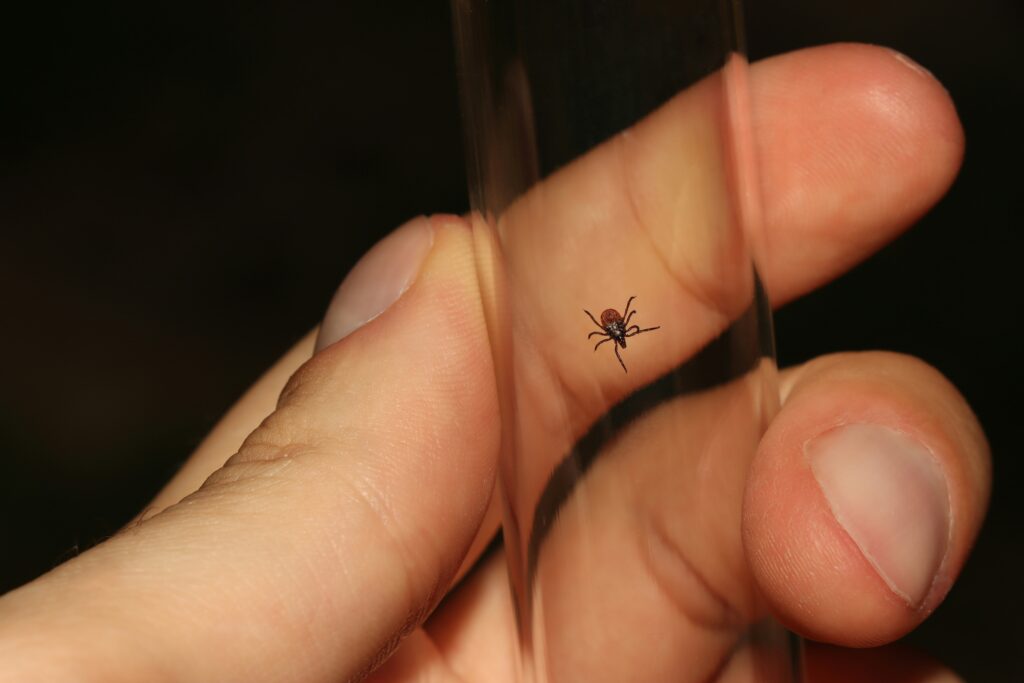
Despite their somewhat intimidating appearance and impressive hunting abilities, fishing spiders generally pose no significant threat to humans. Their bites, while venomous, typically cause only mild localized pain, redness, and swelling in most individuals – similar to a bee sting and far less concerning than bites from medically significant spiders. Encounters between humans and fishing spiders most commonly occur during recreational activities near freshwater bodies, where the spiders may be found resting on docks, boats, or waterside structures. Many fishing spider species have successfully adapted to human-altered environments, including artificial ponds, reservoirs, and even swimming pools in some regions. Conservation biologists consider fishing spiders to be important ecological indicators, as their presence typically signals a healthy aquatic ecosystem with abundant prey species and limited pollution.
Ecological Significance and Environmental Indicators

Fishing spiders play a crucial role in freshwater ecosystems as mid-level predators that help regulate populations of aquatic insects and small vertebrates. Their presence in a water body often indicates a healthy, functioning ecosystem, as these spiders require clean water and abundant prey to thrive. Environmental scientists increasingly use fishing spider populations as bioindicators when assessing aquatic ecosystem health, as these sensitive predators tend to disappear from waters affected by pollution, habitat degradation, or invasive species. The spider’s role extends beyond simple predation, as they also serve as prey for larger predators like birds and fish, forming an important link in freshwater food webs. Additionally, juvenile fishing spiders’ ballooning dispersal mechanism helps them colonize isolated water bodies, potentially bringing benefits to new ecosystems by establishing predatory pressure on potentially harmful insect populations like mosquito larvae.
Future Research and Unanswered Questions
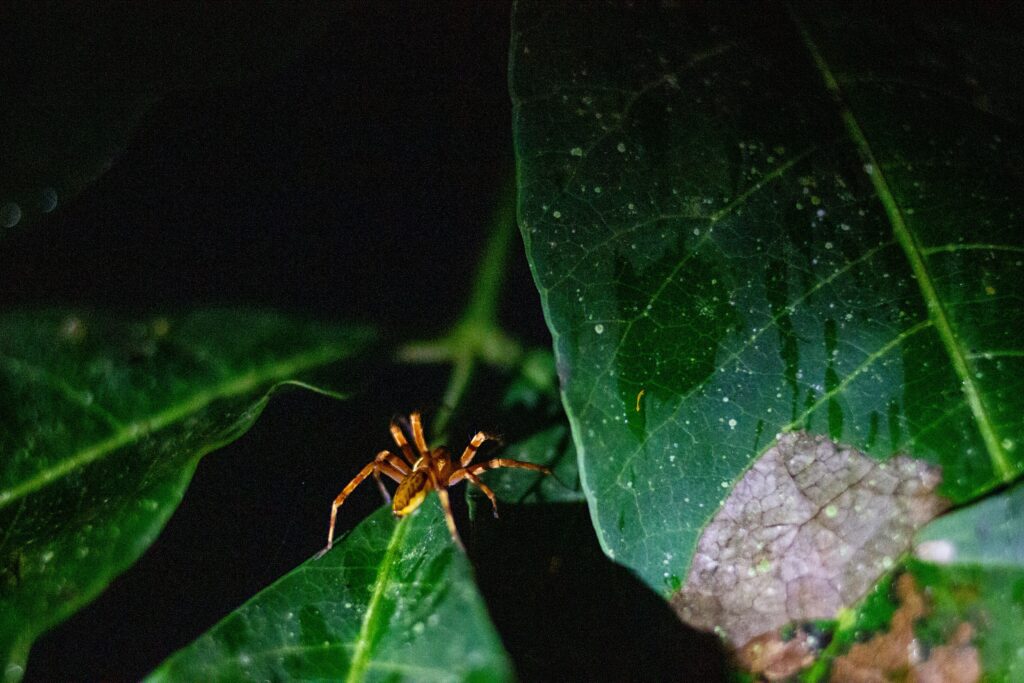
Despite centuries of observation, many aspects of fishing spider biology remain poorly understood and represent exciting frontiers for future research. Scientists are particularly interested in better understanding the precise mechanics of how fishing spiders detect and interpret different vibrational patterns on the water’s surface, potentially offering insights for developing new bio-inspired sensors. The complete composition of their venom remains incompletely characterized, with potential applications in the development of new insecticides or even medical compounds. Climate change poses uncertain challenges for these water-dependent predators, making their population dynamics and adaptive responses an area of active investigation. Perhaps most intriguingly, recent research suggests fishing spiders may possess more complex learning abilities than previously thought, raising fascinating questions about cognition and decision-making in these specialized hunters.
Conclusion
The fishing spider represents one of nature’s most elegant specialized predators – a creature that has mastered the challenging interface between water and air while maintaining the predatory advantages of venomous spiders. Their remarkable combination of adaptations allows them to exploit a niche few other predators can access, walking on water with precision while detecting, pursuing, and subduing aquatic prey with specialized venom. As both predator and prey in freshwater ecosystems, these fascinating arachnids play vital ecological roles while demonstrating evolution’s remarkable capacity to produce specialized solutions to environmental challenges. The next time you visit a pond, stream, or lake, take a moment to look for these water-walking hunters – living proof that nature’s innovations often surpass our wildest imagination.

